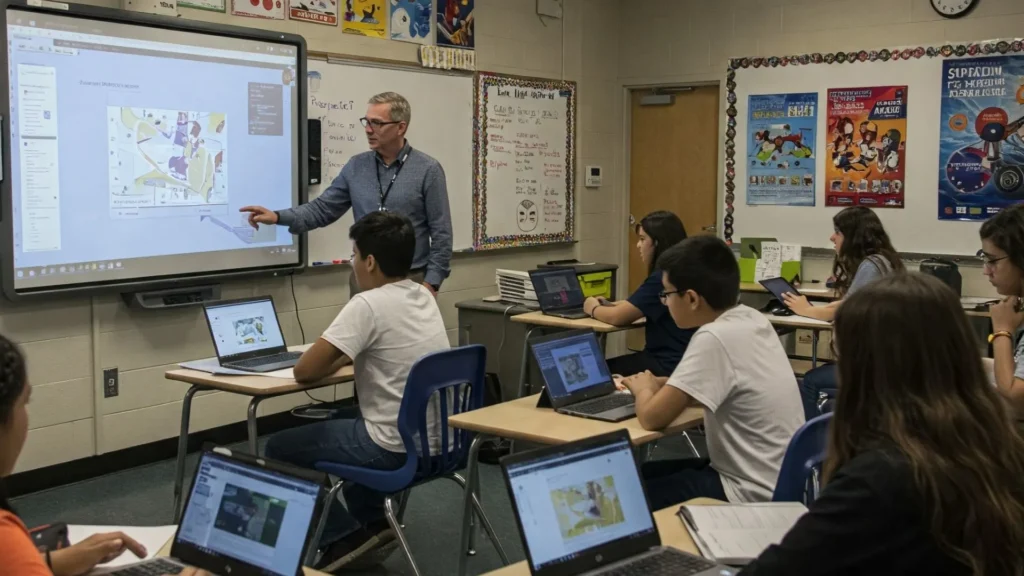Introduction
Former President Donald Trump has revealed a sweeping plan to bring artificial intelligence (AI) into American classrooms, with the goal of “transforming education for the digital age.” The proposal, made at a recent campaign rally, proposes employing AI-based tutors, automated grading systems, and customized learning tools to enhance student performance and ease teacher burdens.
But is this a visionary step ahead or an experiment with kids’ education?
This blog explores:
- Trump’s AI education plan: Key promises
- Potential benefits of AI in classrooms
- Concerns about privacy, bias, and job losses
- How other countries are using AI in schools
- What teachers, parents, and experts are saying
- Trump’s AI Education Plan: Key Proposals
1. AI Tutors for Every Student
24/7 Homework Help: ChatGPT-style bots to aid with math, science, and essay writing.
Personalized Learning: AI tailoring lessons to individual students’ pace and strengths.
2. Automated Grading & Feedback
Instant Grading: AI assessing tests and essays, cutting teacher workloads.
Plagiarism Detection: Sophisticated tools to detect cheating in real time.
3. Career-Prep AI Tools
Job Market Predictions: AI leading students to high-demand skills.
Virtual Internships: Virtual work experience in tech, healthcare, and trades.
4. “Patriotic Education” AI
Customized History Lessons: Focus on “pro-America” accounts (a Trump priority since 2020).
Possible Benefits: Can AI Rescue U.S. Schools?

- Closing the Tutor Gap – AI might make low-cost tutoring available to students who can’t pay for private tutoring.
- Teacher Burnout Reduced – Grading automation might create time for individual mentoring.
- Personalized Learning – AI might allow struggling students to catch up while pushing advanced students.
- STEM Boost – Coding and AI literacy might prepare children for future careers.
Controversies & Risks
- Privacy Issues – Will student information be hacked or sold? (See: ChatGPT bans in NYC schools.)
- AI Bias – Might algorithms prefer specific learning strategies or political ideologies?
- Job Replacement – Will AI eliminate teachers’ aides and tutors?
- Dependence on Technology – Potential for less critical thinking with robots doing everything.
Global Comparisons
| Country | AI in Schools | Lessons for the U.S. |
| China | AI “robot teachers” monitor engagement | High tech, but raises surveillance fears |
| Estonia | AI grades essays nationwide | Saves time, but lacks human nuance |
| Finland | Focus on AI ethics, not just tools | Balances innovation with caution |
Reactions of Educators & Parents
- Teachers’ Unions: Concern over layoffs and data harvesting.
- Tech Advocates: Support modernization but caution against hasty rollout.
- Parents: Divided some desire cutting-edge equipment, others worry about screen saturation.
What’s Next?
If Trump wins in 2024, anticipate federal grants for AI school pilots.
Regulatory Debates (e.g., prohibition of facial recognition in classrooms).
AI vs. Teachers’ Strikes: Possible confrontations over automation.
Conclusion
Trump’s plan for AI education is bold but divisive. While AI might democratize tutoring and take some burden off teachers, concerns about data privacy, bias, and dehumanized learning cast a long shadow.
One thing is certain: The classroom of the future will be coded but should it be coded by politics?

